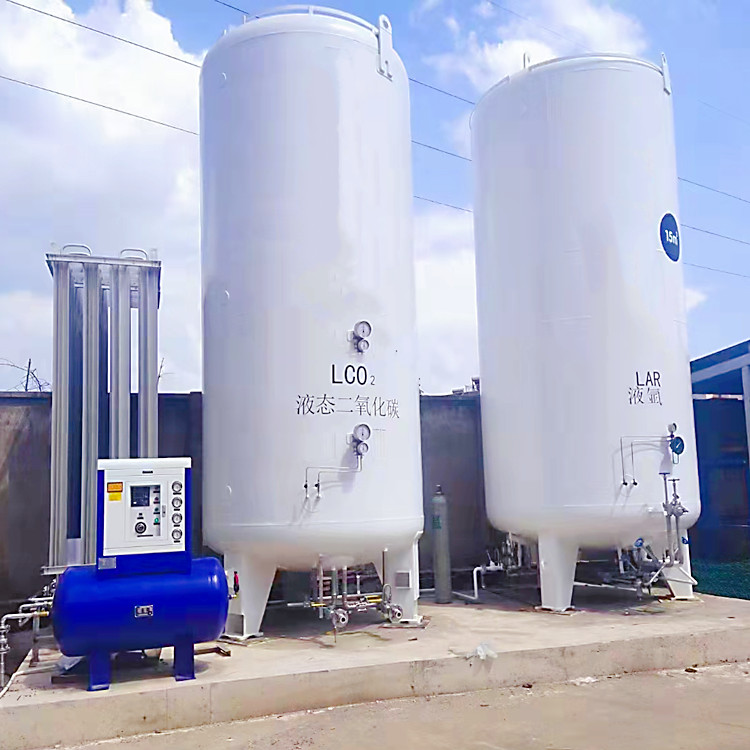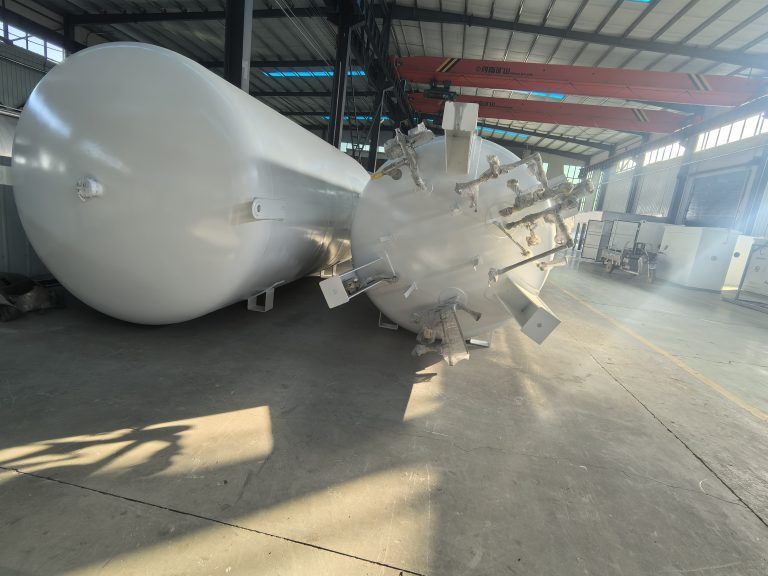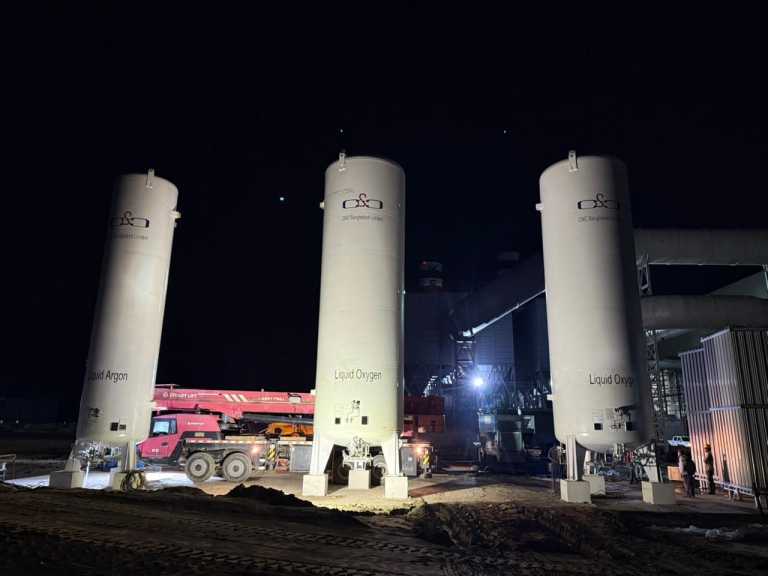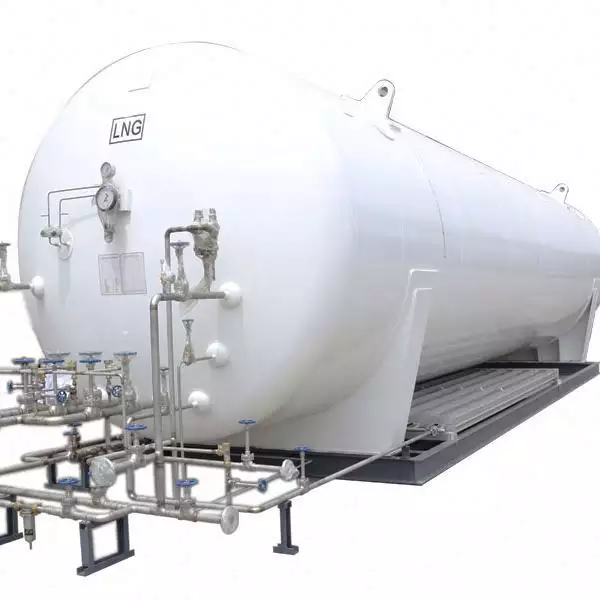As a key equipment for storing liquid argon, the safety and stability of liquid argon storage tanks are directly related to production efficiency and personnel safety. This article will provide you with a detailed usage guide from aspects such as the structural features, operation norms, and safety protection of liquid argon storage tanks.
I. Structural Features of Liquid Argon Storage Tanks
1.Classification and Structure
Liquid argon storage tanks are generally divided into two structures: vertical and horizontal. The interior is composed of an inner tank and an outer tank. The inner tank is made of 304 stainless steel, which has excellent corrosion resistance and pressure resistance. The outer liner is made of ordinary carbon steel, filled with insulation materials such as perlite in the middle, and vacuum-treated to achieve a good insulation effect.
2.Capacity and Customization
The capacity range of liquid argon storage tanks is extensive, ranging from 5 cubic meters to 150 cubic meters, and can be customized according to customer requirements. This flexibility enables liquid argon storage tanks to meet the production demands of enterprises of different scales.

Ii. Operating Specifications for Liquid Argon Storage Tanks
1.Operator requirements
Personnel operating liquid argon storage tanks must undergo training and assessment by the quality supervision and inspection department at or above the prefectural level and obtain the qualification certificate for pressure vessel operation. Before operation, protective equipment such as anti-static clothing and anti-static shoes should be worn properly, and clothes with metal ornaments should be avoided.
2.Operating procedures
Inspect the equipment: Before operation, check whether the appearance, valves, pipelines, etc. of the liquid argon storage tank are in good condition to ensure there is no leakage or damage.
Filling liquid argon: When filling liquid argon, the filling speed should be strictly controlled to prevent the liquid argon from splashing out. At the same time, it is necessary to ensure that the filling pipeline is firmly connected to the storage tank to prevent leakage.
Monitor pressure: During operation, closely monitor the pressure changes in the liquid argon storage tank to ensure that the pressure remains within a safe range. If abnormal pressure is detected, operation should be stopped immediately and the cause checked.
Regular maintenance: Regular maintenance and upkeep of the liquid argon storage tank should be carried out, including cleaning the inner tank, replacing insulation materials, and inspecting valves, to ensure that the equipment is in good condition.
Iii. Safety Protection for Liquid Argon Storage Tanks
1.Anti-static and lightning protection
Liquid argon storage tanks should be equipped with grounding systems and lightning protection facilities to prevent damage to the equipment caused by static electricity and lightning. At the same time, operators should avoid activities that generate static electricity near the equipment, such as using mobile phones and lighters.
2.Anti-freezing and anti-poisoning
Liquid argon has an extremely low temperature. Once it splashes onto the skin, it may cause frostbite. Therefore, operators should wear protective equipment properly to avoid direct skin contact with liquid argon. In addition, liquid argon releases a large amount of argon gas during the vaporization process, which may cause asphyxiation. Therefore, the operation area should maintain good ventilation conditions to prevent the accumulation of argon gas.
3.Fire prevention and explosion prevention
Although liquid argon itself does not burn, there may be flammable gases inside the liquid argon storage tank. Therefore, the operation area should strictly prohibit smoking and open flames and be equipped with corresponding fire-fighting facilities. At the same time, the sealing performance of the liquid argon storage tank should be inspected regularly to prevent the leakage of flammable gas.

Iv. Installation and Acceptance of Liquid Argon Storage Tanks
1.Installation qualifications
Enterprises installing liquid argon storage tanks must possess the corresponding qualifications for pressure vessel installation and carry out construction in accordance with relevant standards and norms. During the installation process, it is necessary to ensure that the equipment foundation is flat and stable, and the pipeline connections are firm and sealed.
2.Acceptance criteria
After installation is completed, a comprehensive acceptance inspection of the liquid argon storage tank should be carried out. This includes checking whether the appearance of the equipment, valves, pipelines, etc. are in good condition; Test whether parameters such as pressure and temperature meet the requirements; Check whether the grounding system and lightning protection facilities are effective, etc. It can be put into use only after passing the acceptance inspection.
V. Summary
As a key device for storing liquid argon, the safety and stability of liquid argon storage tanks are of vital importance. By understanding the structural features of liquid argon storage tanks, mastering operation norms, strengthening safety protection, and strictly implementing installation and acceptance measures, the safe operation of liquid argon storage tanks can be ensured and production efficiency can be improved. Meanwhile, operators should constantly enhance their safety awareness and strictly abide by operating procedures to ensure the safe production of the enterprise.






